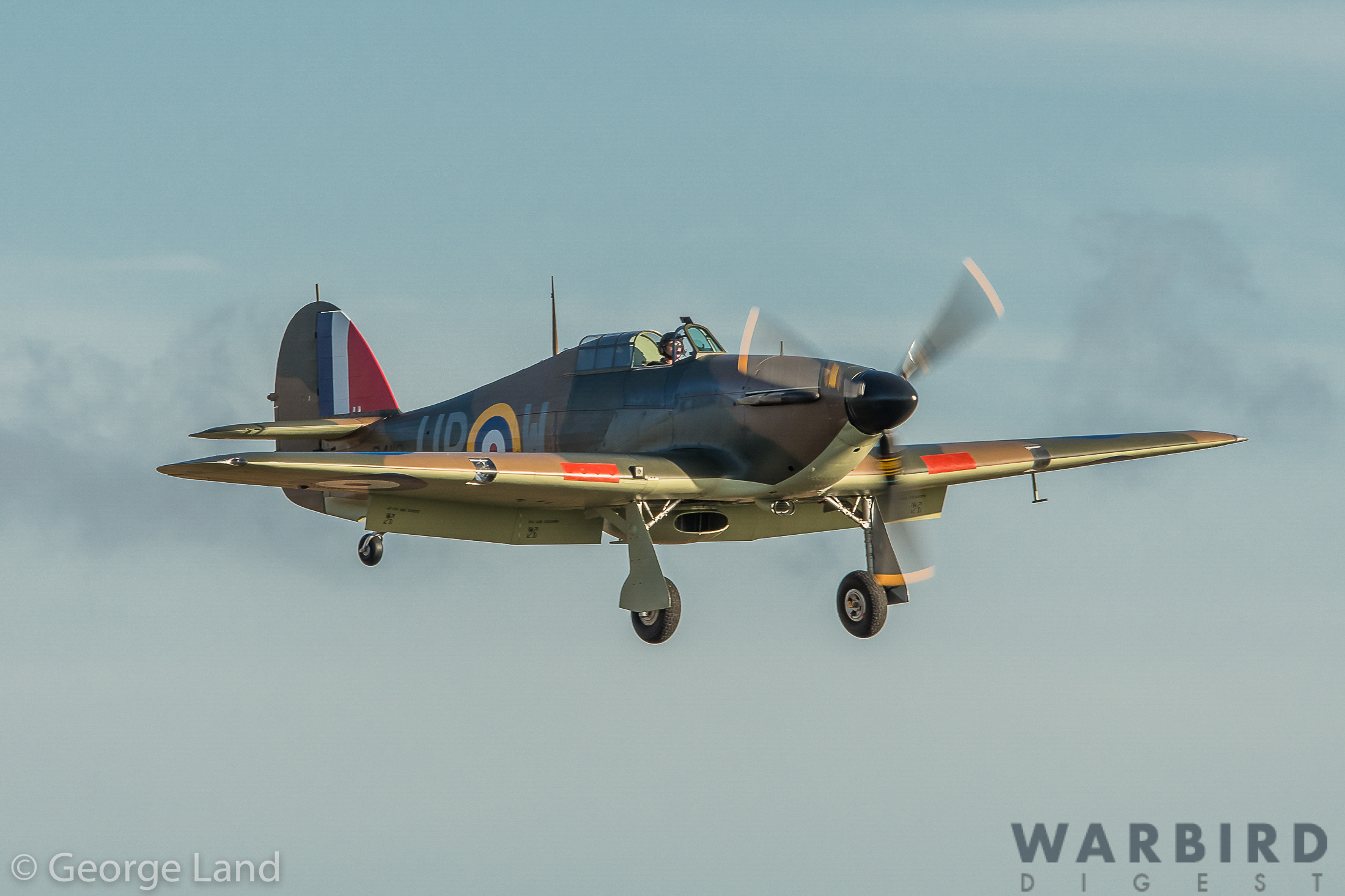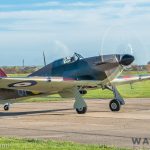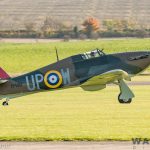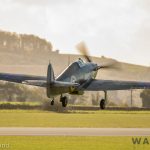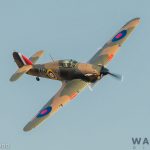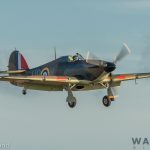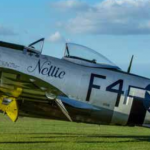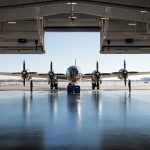Battle of Britain veteran Hawker Hurricane Mk.I R4118 took to the skies again on November 13th for the first time in more than a year following an overhaul. Back in August, 2017, just prior to the Hurricane taking off for an air display, the aircraft’s owners, Hurricane Heritage, discovered signs of a crack in R4118’s rare Rolls-Royce Merlin Mk.III engine. Upon removing the engine for overhaul, the maintenance team found cracks in both cylinder banks. They also found a few other issues which needed remedial work, such as leaks in the Glycol header tank and damage to the Rotol propeller hub (which they decided to remanufacture). Hurricane Heritage also chose to replace some of the aircraft’s Irish linen covering as well.
As many readers will remember, R4118 made international headlines in 1997 when Peter Vacher announced her discovery in nearly complete, but derelict condition at Banaras Hindu University, in Varanasi, north-eastern India. Following a protracted negotiation, Vacher successfully imported the Hurricane back to her ancestral home in 2001, and soon set about her restoration. The Gloster Aircraft Company built R4118 under license at their factory in Hucclecote, Gloucestershire during 1940. On August 17th, 1940, she joined her first operational unit, 605 (County of Warwick) Squadron, at RAF Drem in East Lothian, Scotland. The Squadron relocated to Croydon, near London that September. Coded UP-W, the aircraft flew 49 sorties during the Battle of Britain, and is credited with five victories over enemy aircraft. Damaged in combat on October 22nd, R4118 underwent repairs and returned to the fray on January 18th, 1941 with Treble One Squadron at RAF Dyce (now known as Aberdeen International Airport) in Scotland. Here, the Hurricane took part in patrols over the North Sea. Eventually, R4118 was relegated to non-combat roles with both 56 and 59 Operational Training Units. This didn’t render the aircraft safe from mishap though, as she endured additional incidents which apparently required a further three rebuilds. In December, 1943, RAF technicians disassembled the Hurricane and crated her for shipment to India, where she was again scheduled to take on a training role. However, the aircraft remained in her crate once she arrived in Bombay (now Mumbai), and only re-emerged after being struck off charge in 1947 and donated to the technical training college where Peter Vacher eventually found her half a century later. She flew again for the first time in 2004, and has delighted crowds across the British Isles in the decades since until her engine problems last year.
R4118’s refurbishment took place primarily at Duxford Aerodrome in Cambridgeshire, England. The legendary WWII airfield will be the aircraft’s new base of operations following several seasons stationed with the Shuttleworth Collection at Old Warden near Biggleswade, Bedfordshire. We hope she continues to fly successfully for many years into the future!
Many thanks to George Land for the marvelous photographs of her first flight!







